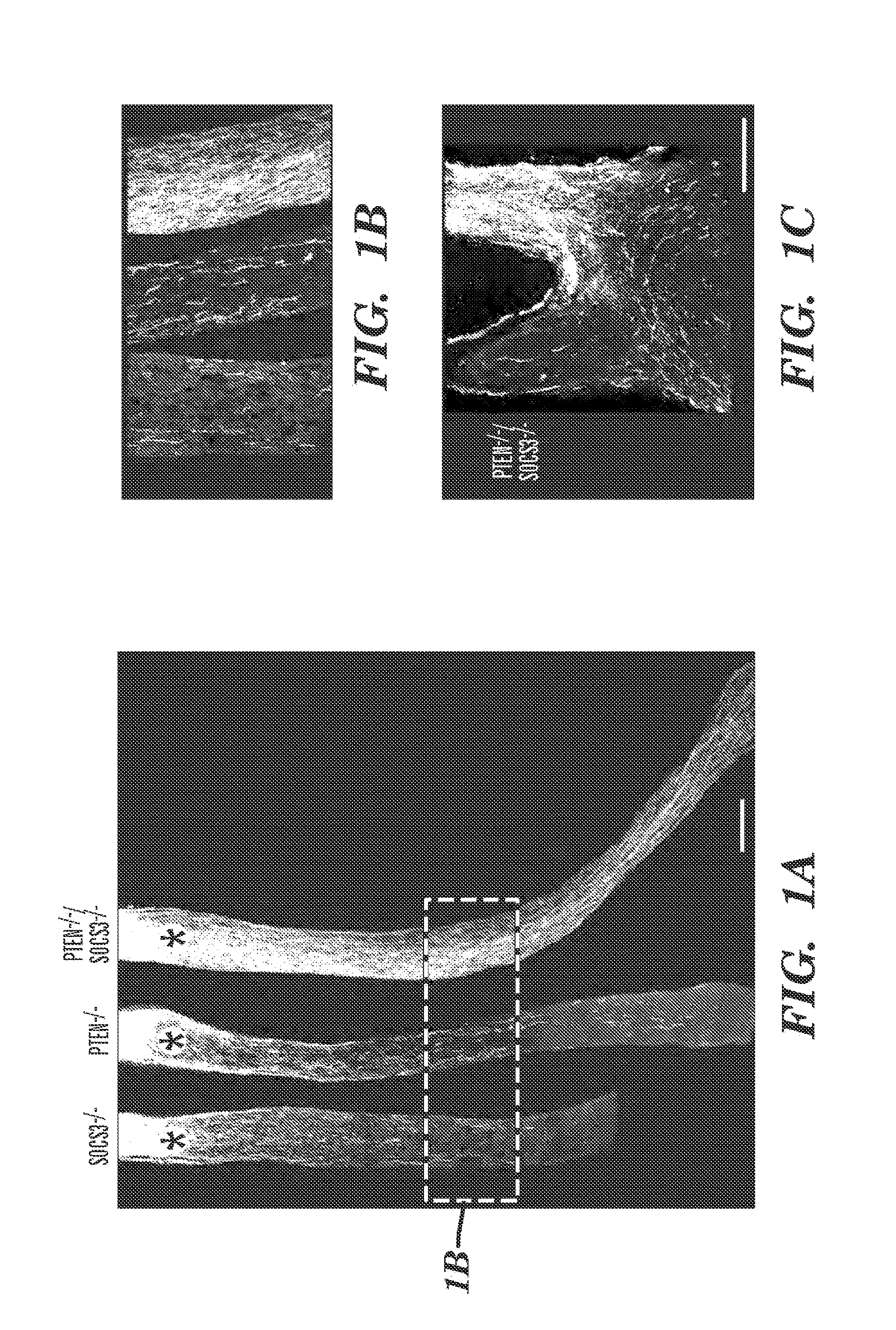Co-activation of mTOR and STAT3 pathways to promote neuronal survival and regeneration
a neuronal survival and regeneration technology, applied in the field of neuronal regeneration, can solve the problems of long distances, elusive underlying mechanisms that control axon regeneration in adult cns and pns, etc., and achieve the effect of promoting sustained survival of a mature neuron
- Summary
- Abstract
- Description
- Claims
- Application Information
AI Technical Summary
Benefits of technology
Problems solved by technology
Method used
Image
Examples
example 1
[0162]During development axons reach their targets first through de novo outgrowth in embryos, followed by “networked growth” in which axons elongate with termini tethered to their targets. As animals increase in body size during postnatal and adolescent stages, the distance resulted from the “networked growth” could be much longer than that traveled by the initial de novo growth. After injury in the adult CNS, regenerating axons need to carry out de novo growth over relatively vast distances to reach their targets. Thus, the robustness of axon regeneration, in terms of both speed and duration of axon regrowth, is critical for making functional reconnections in adulthood. Approaches that have been shown to promote axon regeneration in the adult CNS include reducing extracellular inhibitory activity and increasing intrinsic growth ability1-9. However, the extents of axon regeneration observed in these studies are still limited. For example, previous studies demonstrated that the inju...
example 2
[0187]Central nervous system lesions, such as spinal cord injury and stroke, can damage projecting neurons, resulting in the de-nervation of functional important target areas. In principle, if the neuronal cell body is spared, functional recovery can be achieved by regeneration of lesioned axons; alternatively, especially when neuronal cell bodies are lost, sprouting from non-injured neurons / axons can form new circuits compensating for the lost functions. Although spontaneous sprouting can occur extensively in early postnatal life, it is restricted in the adult, thus functional deficits are often permanent.
[0188]The corticospinal pathway, controlling voluntary movements, is particularly important for functional recovery after spinal cord injury and stroke. It is also a valuable model for studying injury-induced axon sprouting in rodents, because it has a precise topographic organization of fibers projecting into the spinal cord, which is lost without compensation after a simple pyra...
example 3
REFERENCES FOR EXAMPLE 3
PUM
| Property | Measurement | Unit |
|---|---|---|
| time | aaaaa | aaaaa |
| time | aaaaa | aaaaa |
| time | aaaaa | aaaaa |
Abstract
Description
Claims
Application Information
 Login to View More
Login to View More - R&D
- Intellectual Property
- Life Sciences
- Materials
- Tech Scout
- Unparalleled Data Quality
- Higher Quality Content
- 60% Fewer Hallucinations
Browse by: Latest US Patents, China's latest patents, Technical Efficacy Thesaurus, Application Domain, Technology Topic, Popular Technical Reports.
© 2025 PatSnap. All rights reserved.Legal|Privacy policy|Modern Slavery Act Transparency Statement|Sitemap|About US| Contact US: help@patsnap.com



